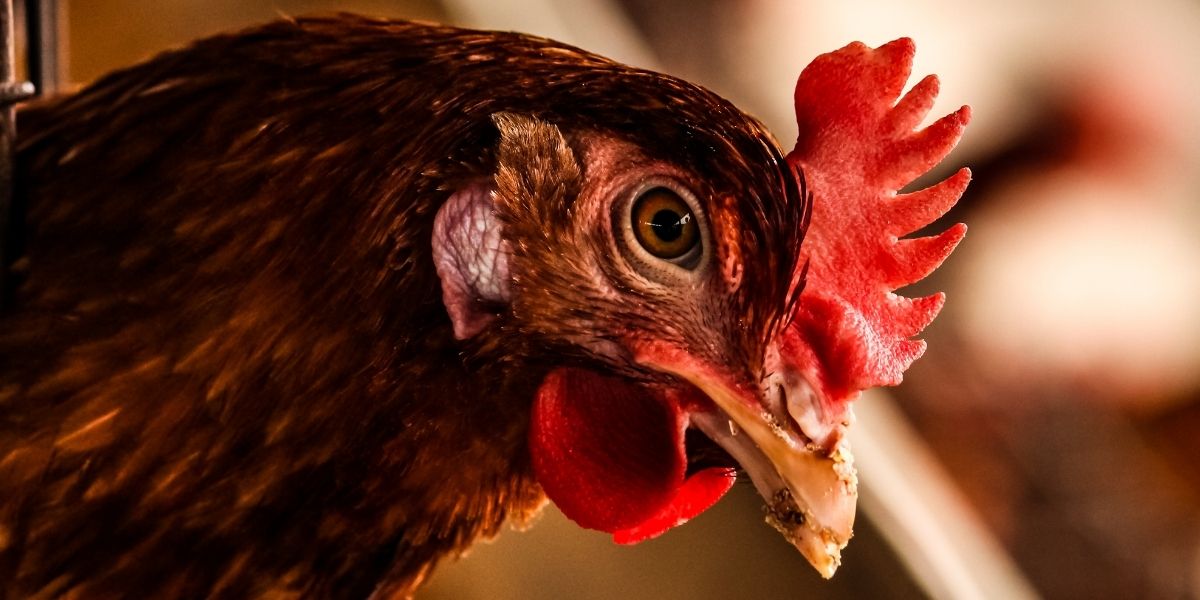Poultry lice – what they are and how we can get rid of them
Poultry lice are almost invisible, but they can affect the health of chickens and humans if they are not removed in time. Lice are external parasites (scientific name Dermanyssus Gallinae) that consume blood at night when hens rest. Most of the time, humans or other animals in the household are not affected by these parasites. Due to the infestation of chicken lice, egg production also suffers. In today’s article, even if we feel a little uncomfortable when discussing lice, we will discuss prevention methods and what to do if the chicken has been infested with these parasites.
Poultry lice – why do they appear?
Poultry lice are small and almost invisible to the human eye. They live in chicken feathers and cause them significant discomfort. Chicken lice are different from human lice, with only 1.5 mm, well-developed, gray-colored legs, which become reddish after consuming blood.
Poultry lice most often appear in the summer and can be brought by wild birds or pigeons. In general, poultry is kept accessible in the yard, so it is advisable to use certain substances or powders found in specialty pharmacies to deworm them completely. The hens’ houses must also be sanitized, as they stand together and can take lice from each other.
To protect the chickens from lice, it is advisable to check the chicken carefully before putting them in the cage. Also, try to keep food sources and feed bags away from possible infestation.
Poultry lice – how are poultry affected?
Poultry lice are harmful and affect poultry. These parasites do not always sit on chickens. They feed on blood during the night – on the wings, legs, or chest, when the chicken rest. During the day, in the sunlight, when the chickens come out of the shed, the lice hide in the hut through the cracks of the shelter. Here, lice mate and lay eggs. Chicken lice are hardy and can survive for ten months without feeding.
Poultry lice – symptoms
Poultry, which has been infested with lice, will have the following symptoms:
– Excessive scratching
– Restless sleep. Sometimes hens that have chicken lice cannot rest properly.
– Loss of their feathers and dirt
– Irritation of the legs
– Decreased egg production
– Difficulty walking
– Chicken no longer has an appetite and looks weak
– The hens don’t want to go to the cage in the evening.
– Bloodstains on the eggshell
Also, on closer inspection of the chicken, you may notice clumps of poultry lice at the base of the feathers, especially on the wings. Best of all, to check if the bird has lice, you can rub a white cloth or even a sheet of feathers. There are two types of lice – hematophages, those that feed exclusively on blood, and malophages, those that feed on the remains of the epidermis, down, flakes, and dry blood from irritated skin due to the vigorous scratching caused by lice. In both cases, there is irritation and itching.
How to get rid of poultry lice
To get rid of poultry lice, it is essential to find the source first. Hens can only get these external parasites from external sources. Lice can be taken from newly brought birds or even from rodents. The treatment will no longer work if the source is not detected, treated, or disposed of.
When replacing chicken bedding, it is recommended that you burn the old one. Burning is mandatory if you have detected lice.
If you deal with poultry lice, you can buy an insecticide treatment and apply it when the chicken is not in the cage. Some farmers also recommend whitewashing the shed. When carrying out the treatment, do not forget to put a mask on your face, wash your hands thoroughly after you have finished, and change the clothes you have worn, as insecticide residues may remain.
For additional measures to control chicken lice, you can provide the hens with an ashtray, in which various substances or powders with insecticides can be added.
The deworming treatment must be repeated at least three times in a row, at an interval of one week, because during this time, the eggs left in hard-to-reach places can hatch, and other parasites will appear in the cage. During the warm season, it is advisable to repeat the treatment as often as possible to avoid problems with a possible infestation of chicken lice. These parasites do not live long outside the host (hens). It is usual for humans to reach the entrance to the cage, but they will not last more than five days.
Biotur provides you with products specifically designed for chickens, such as the Avishield chicken and poultry vaccine. It is indicated for the active immunization of chickens (broilers and future laying/breeding hens) to reduce the negative effect on ciliary activity, which may manifest as clinical respiratory signs resulting from infection with viral avian bronchitis virus Massachusetts serotype.



